25 Unique Dining Traditions From Around The World
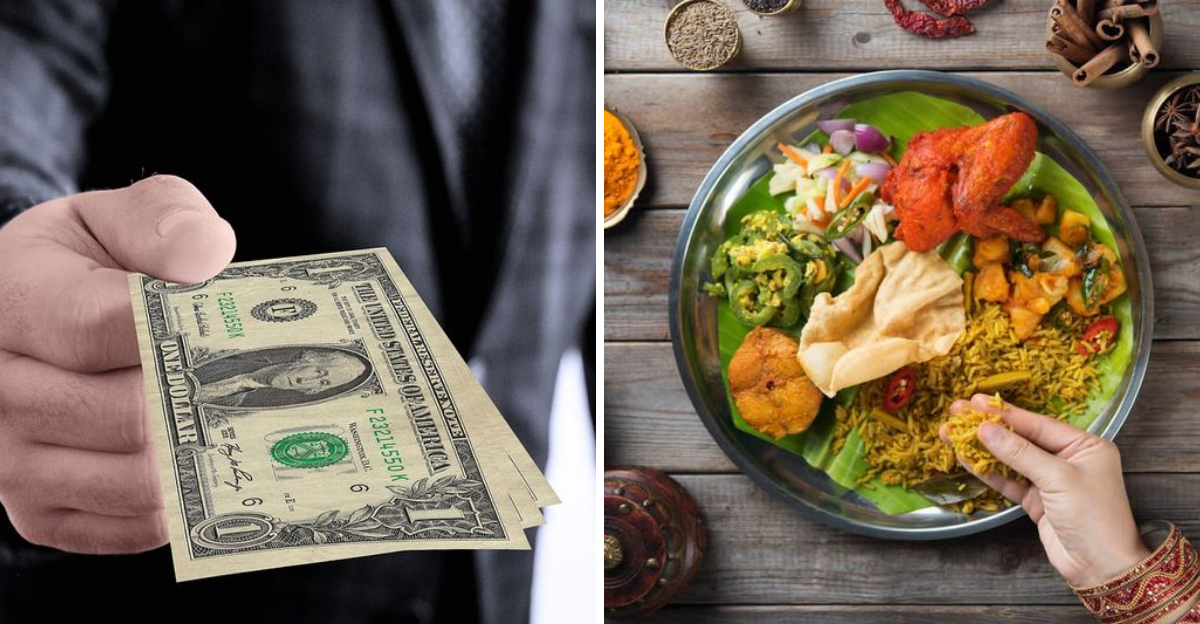
Explore a fascinating journey through 25 unique dining traditions from around the world. These customs reveal the diversity and cultural richness that surrounds the simple act of sharing a meal. From Japan to Spain, discover how people express appreciation, respect, and enjoyment through their dining habits.
1. Slurping Is a Compliment – Japan
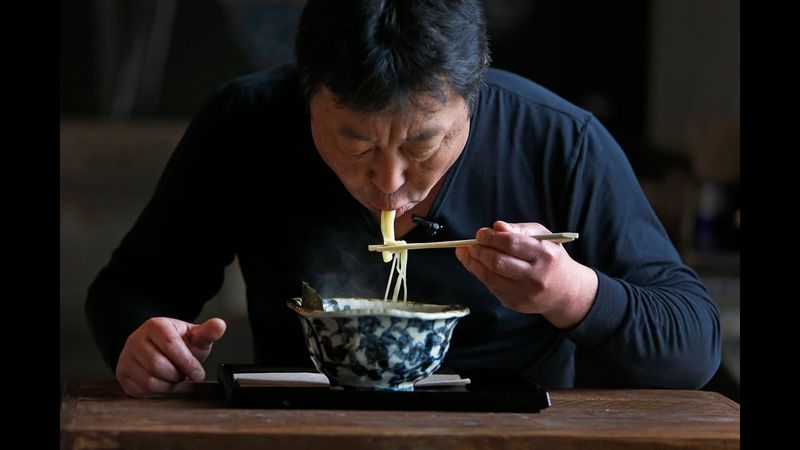
In Japan, slurping noodles is more than acceptable; it is encouraged. The louder the slurp, the greater the compliment to the chef. This tradition is rooted in the belief that slurping enhances the flavor of the noodles through aeration. The sound might be jarring to outsiders but is a sign of appreciation and enjoyment in Japanese culture. Whether in a bustling ramen shop or a quiet household, this practice bridges the eater with the essence of the dish. Next time you’re in Japan, don’t hold back that slurp!
2. Don’t Use Your Left Hand – India, Middle East
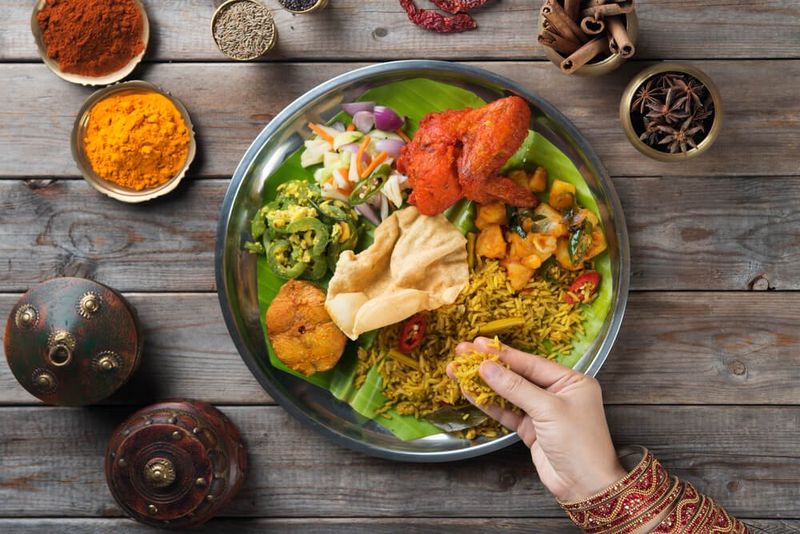
In many Indian and Middle Eastern cultures, the use of the left hand is frowned upon during meals. This stems from cultural beliefs associating the left hand with unclean tasks. The right hand is reserved for eating, ensuring hygiene and respect at the dining table. Whether enjoying a spicy curry in India or a fragrant kebab in the Middle East, this practice highlights the importance of tradition and respect in these regions. Such customs offer insight into the values that bind these communities together.
3. Bread as a Utensil – Ethiopia
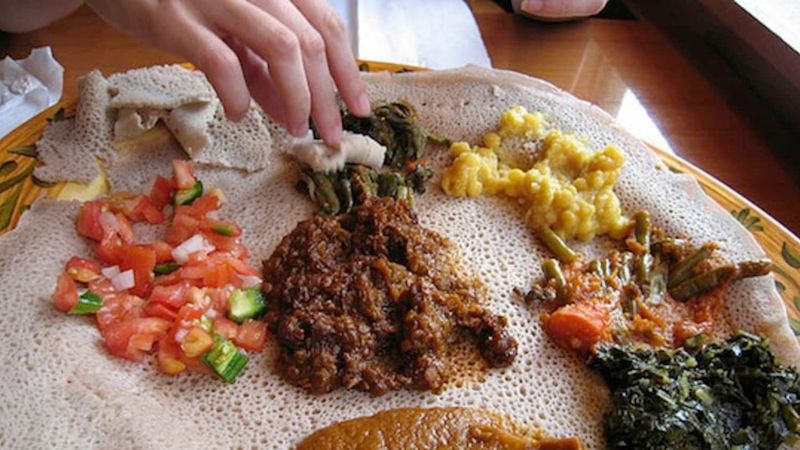
In Ethiopia, injera isn’t just a dish; it’s an essential utensil. This spongy sourdough flatbread is used to scoop up flavorful stews and dishes, replacing forks or spoons. Sharing a large platter of food, diners tear off pieces of injera and use it to gather their portion. This communal way of eating emphasizes sharing and community, reflecting Ethiopia’s rich cultural values. The texture and mild taste of injera complement the spicy and rich Ethiopian cuisine, making every meal a social event.
4. Burping Shows Satisfaction – Parts of China

In certain regions of China, a post-meal burp isn’t merely a bodily function; it’s a gesture of gratitude. This unconventional compliment to the cook shows appreciation for a satisfying meal. Unlike in the West, where burping might be considered rude, here it signifies enjoyment and fullness. This tradition reflects the diverse ways people express contentment and gratitude globally. Sharing a meal becomes more than just eating; it’s about connecting and appreciating the culinary art.
5. Silence Is Golden – Norway

In Norway, the dining table is a place of quiet appreciation. Silence during meals is considered respectful, allowing diners to fully engage with the food and their thoughts. This practice reflects the Norwegian value of mindfulness and introspection. The quietude doesn’t imply a lack of enjoyment; rather, it’s a way to savor the flavors and textures thoughtfully. In a world full of noise, the Norwegian dining tradition offers a peaceful respite, turning meals into moments of quiet reflection.
6. Tipping Can Be Rude – Japan

In Japan, tipping is not customary and can even be considered offensive. The Japanese believe that excellent service should be a given, not something that requires extra reward. This reflects a deep-rooted cultural appreciation for hard work and dedication. The absence of tipping ensures that the focus remains on genuine hospitality and quality service. Dining in Japan becomes a seamless experience where gratitude is shown through words and gestures, not monetary tips. This tradition highlights respect and mutual appreciation.
7. Don’t Finish Your Plate – Philippines, Thailand
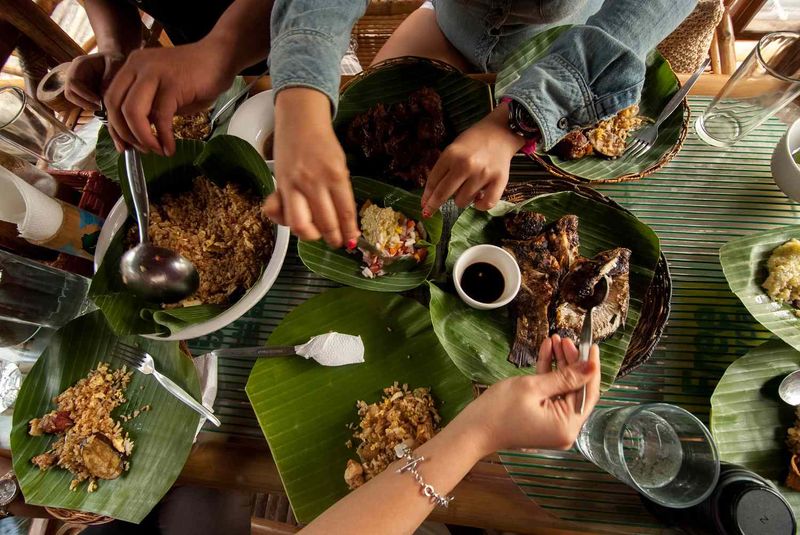
In the Philippines and Thailand, leaving a bit of food on your plate signals that you are satisfied and that the host has provided enough. Clearing your plate might imply that more food is needed, possibly embarrassing the host. This tradition underscores the importance of hospitality and generosity in these cultures. It’s a subtle way of expressing contentment and respect for the host’s efforts. Dining becomes an exchange of appreciation, where gestures speak volumes about social harmony and gratitude.
8. Lick Your Fingers – India
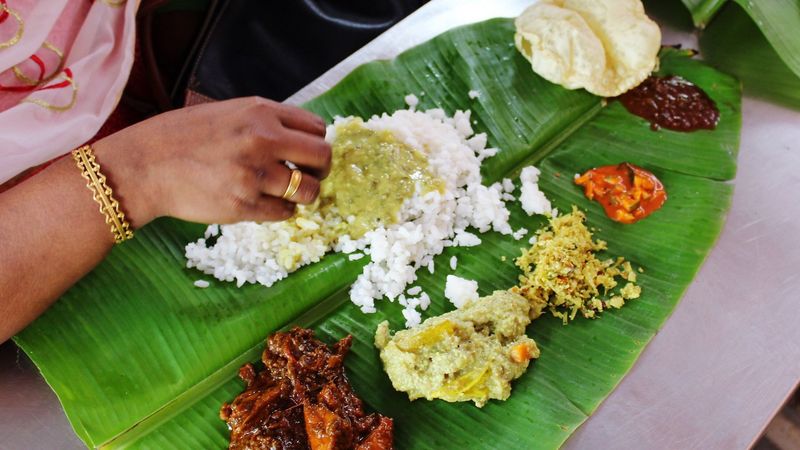
In traditional Indian dining, licking your fingers is not just acceptable; it’s a sign of genuine enjoyment. The act of eating with hands allows diners to feel the texture and temperature of the food, enhancing the sensory experience. Licking fingers at the end of the meal signifies that the food was truly delightful. This practice reflects India’s vibrant culinary culture, where meals are celebrated with enthusiasm and warmth. It’s a testament to the joy and connection that food brings in Indian households.
9. Keep Your Hands Above the Table – France
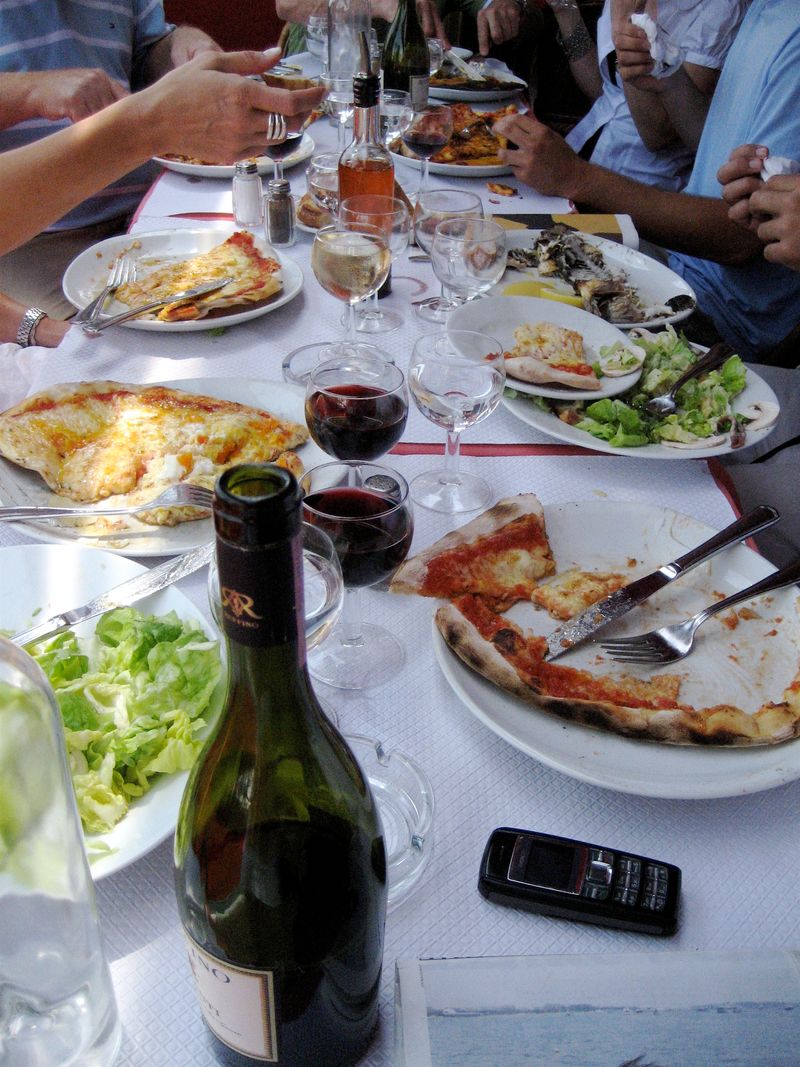
In France, keeping your hands visible above the table is considered proper etiquette. Resting wrists on the table, rather than elbows, is seen as polite and ensures that everyone is engaged in the meal. This practice reflects the French emphasis on refinement and decorum, where dining is an art form. It’s a subtle yet significant gesture that enhances the dining experience, fostering an atmosphere of elegance and respect. French dining traditions celebrate the harmony between formality and enjoyment.
10. Toasting Is Practically Mandatory – Russia

In Russia, toasting is an integral part of any social gathering. It’s not just about clinking glasses but involves heartfelt speeches, eye contact, and camaraderie. Vodka, often the drink of choice, flows freely as toasts are made to health, love, and friendship. This tradition reflects the Russian spirit of hospitality and community, where every opportunity to bond is cherished. Toasting becomes a way to express gratitude, forge connections, and celebrate life’s moments together.
11. Wait for the Eldest – Korea
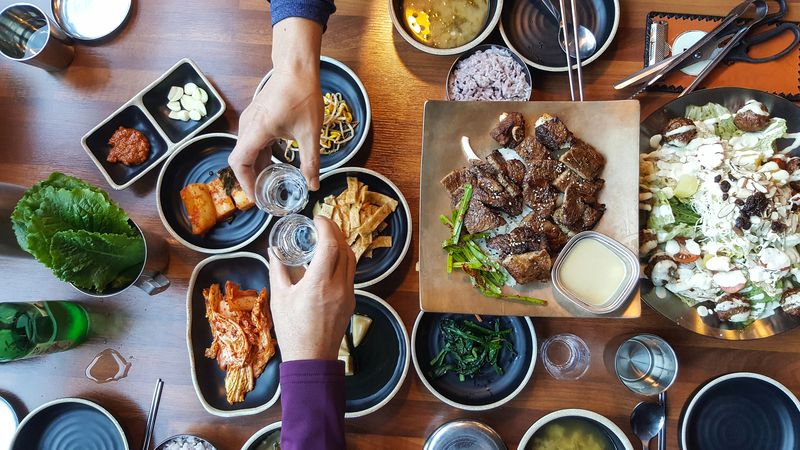
In Korea, respect for elders is deeply ingrained in dining etiquette. Younger diners must wait for the eldest person at the table to lift their chopsticks before they can begin eating. This tradition emphasizes the importance of hierarchy and respect within the family. It’s a way to honor the wisdom and experience of older generations. Dining in Korea becomes a harmonious blend of respect, tradition, and enjoyment, where each meal is a lesson in cultural values.
12. Don’t Ask for Salt – Egypt

In Egypt, requesting extra salt can be seen as a critique of the chef’s skills. The food is expected to be perfectly seasoned, reflecting the chef’s expertise and pride. This tradition highlights the respect given to those who prepare the meal and the cultural appreciation for culinary craftsmanship. Dining becomes an opportunity to savor the chef’s creation as intended, fostering an atmosphere of mutual respect and gratitude. It’s a subtle yet powerful way to honor the art of cooking.
13. Eat With Your Hands – Morocco
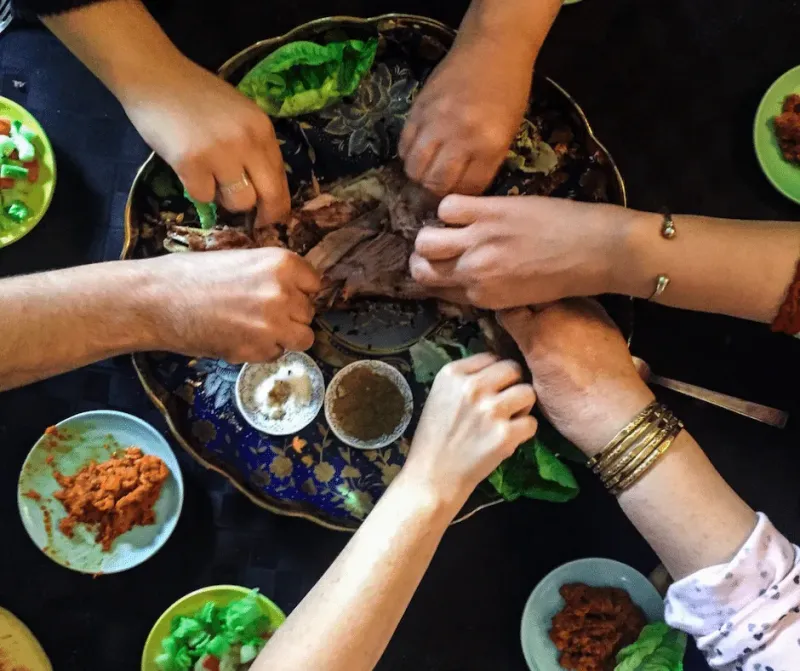
In Morocco, eating with hands is an integral part of the dining experience. Food is often served communally on a large platter, and diners use their right hand to eat, enhancing the connection with the meal. This practice fosters a sense of community and togetherness, reflecting Moroccan hospitality and warmth. The textures and flavors are experienced more intimately, turning every meal into a celebration of culture and friendship. Dining in Morocco is about sharing not just food but moments and memories.
14. Don’t Mix Your Food – Georgia (the country)
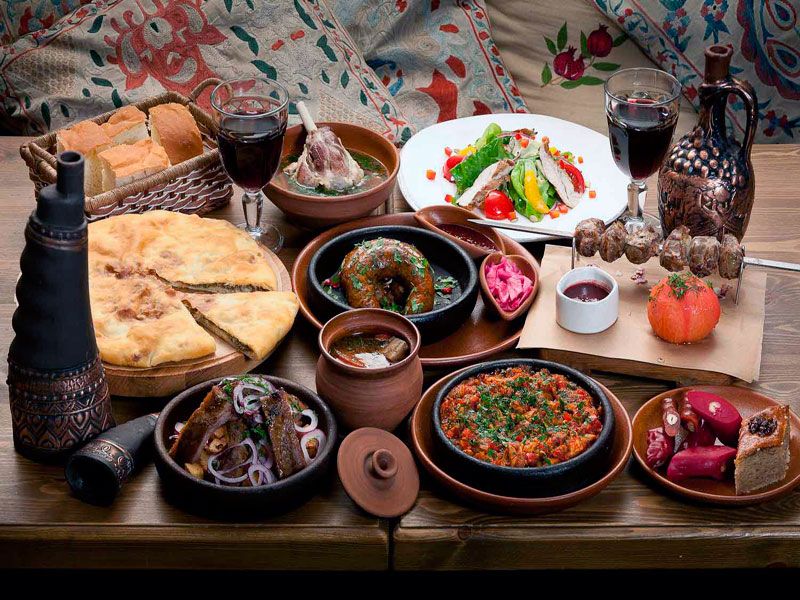
In Georgia, meals are served in distinct courses, and mixing them is often frowned upon. Each dish is appreciated for its unique flavors and textures, reflecting the culinary artistry of Georgian cuisine. This tradition emphasizes the importance of savoring each component individually, allowing diners to fully experience the creativity and skill behind the meal. It’s a celebration of Georgia’s rich culinary heritage, where every dish tells a story and every meal is an exploration of taste and tradition.
15. Use Chopsticks the Right Way – China
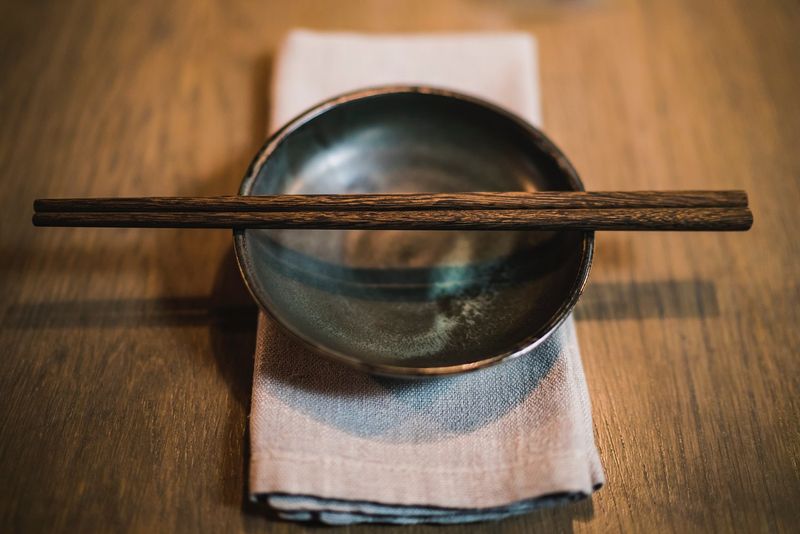
In China, chopstick etiquette is taken seriously, and improper use can be seen as disrespectful. Sticking chopsticks upright in food is particularly taboo, as it resembles incense at funerals. This practice reflects the broader cultural values of respect and tradition. Proper chopstick use is not just about manners; it’s a way to honor the heritage and customs that shape Chinese society. Dining becomes a graceful dance of tradition and etiquette, where every gesture carries meaning and respect.
16. Say Grace Out Loud – Ghana

In Ghana, saying grace out loud before a meal is a cherished tradition. This communal prayer of thanks sets the tone for the meal, expressing gratitude for the food and togetherness. It reflects the Ghanaian values of community, spirituality, and appreciation for life’s blessings. Saying grace becomes a moment of reflection and connection, where the act of dining transcends mere sustenance. It’s a practice that fosters unity and gratitude, turning every meal into a celebration of life and shared joy.
17. Long, Leisurely Meals – Italy
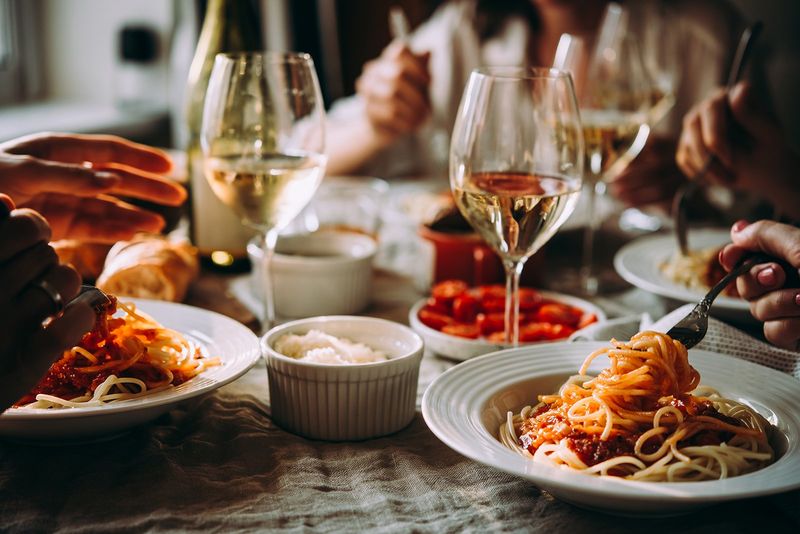
In Italy, meals are meant to be enjoyed slowly, with ample time for conversation and connection. Rushing through dinner is unheard of; instead, Italians savor each course, appreciating the flavors and the company. This tradition reflects the Italian love for food and family, where dining is an experience to be cherished. It’s about more than eating; it’s about celebrating life and relationships. Italian meals become a sensory journey, filled with laughter, stories, and the joy of togetherness.
18. Group Serving – Vietnam
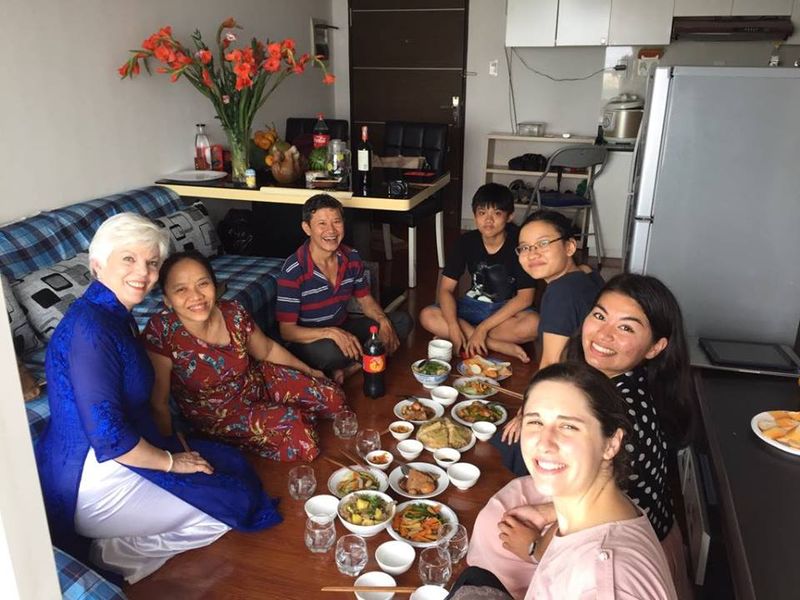
In Vietnam, dining is a communal experience, with dishes shared in the center of the table. It’s customary to offer others the best pieces of meat or fish first, highlighting the importance of generosity and respect. This tradition fosters a sense of community and connection, where meals are about sharing not just food but care and consideration. Vietnamese dining becomes a reflection of cultural values, where every gesture at the table reinforces bonds and builds relationships.
19. No Shoes at the Table – Southeast Asia

In many Southeast Asian countries, removing shoes before entering the home, including the dining area, is customary. This practice signifies respect and cleanliness, ensuring that the space remains pure and free from outside dirt. It’s a simple yet profound gesture that reflects the cultural values of honor and dignity. Dining becomes a sacred act, where the absence of shoes symbolizes a connection to tradition and community. It’s a practice that fosters respect and mindfulness in every meal.
20. The Host Eats Last – Kenya

In Kenya, the host or cook often eats last, ensuring that guests are well taken care of. This tradition reflects the Kenyan spirit of hospitality and generosity, where the comfort and satisfaction of guests come first. It’s a way to show respect and gratitude, turning dining into an act of kindness and care. The host’s gesture becomes a symbol of selflessness and community, where every meal is an opportunity to connect, share, and celebrate togetherness.
21. Say “Bon Appétit” – France & Quebec

In France and Quebec, saying “Bon Appétit” before a meal is more than a polite expression; it’s a cultural ritual. This phrase sets the stage for enjoyment and camaraderie, wishing others a delightful dining experience. It’s a verbal expression of shared joy and appreciation, reflecting the cultural emphasis on connection and enjoyment. Dining becomes a celebration of life and flavor, where the simple act of saying “Bon Appétit” transforms the meal into a moment of shared pleasure.
22. Eat Only What You Touch – Middle East
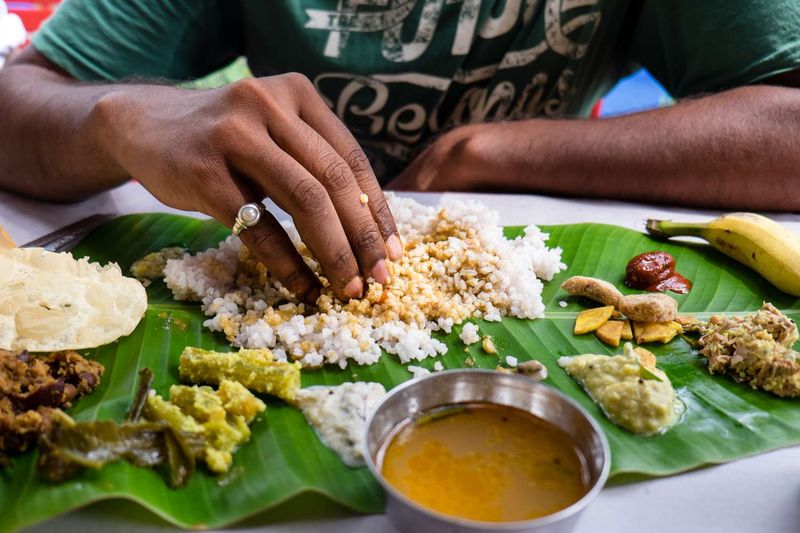
In many Middle Eastern cultures, when sharing dishes, it’s customary to only touch the food you intend to eat. This practice ensures hygiene and respect, reflecting the values of consideration and cleanliness. Dining becomes a mindful experience, where every gesture at the table demonstrates care and respect for others. It’s a tradition that emphasizes the importance of community and cooperation, turning meals into opportunities for connection and understanding.
23. Use All Five Senses – Thailand
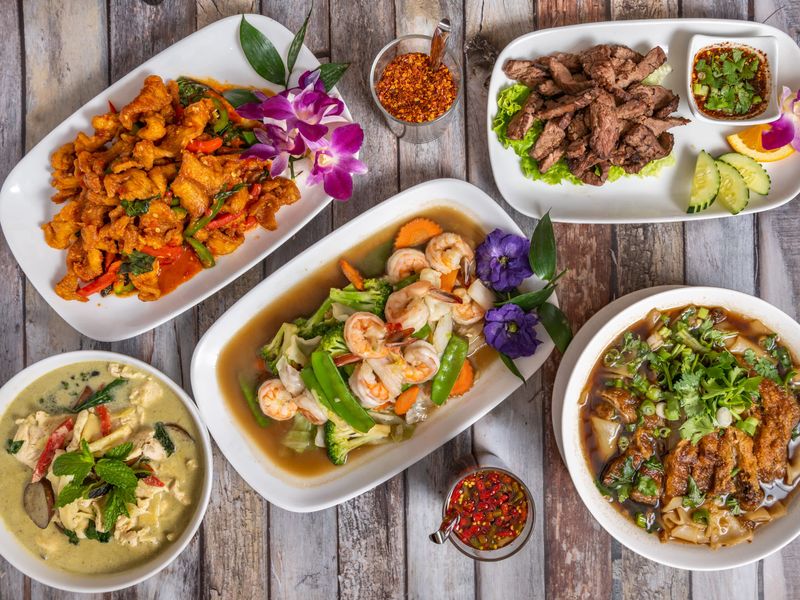
In Thailand, meals are not just about taste; they engage all five senses. From the vibrant colors and fragrant aromas to the textures and sounds, Thai cuisine is a sensory feast. Presentation is as important as flavor, reflecting the Thai appreciation for beauty and balance. This tradition transforms dining into a multi-sensory experience, where every dish tells a story and every meal becomes a celebration of culture and creativity. Thai dining is an art form that delights and inspires.
24. Sharing Is Caring – Spain
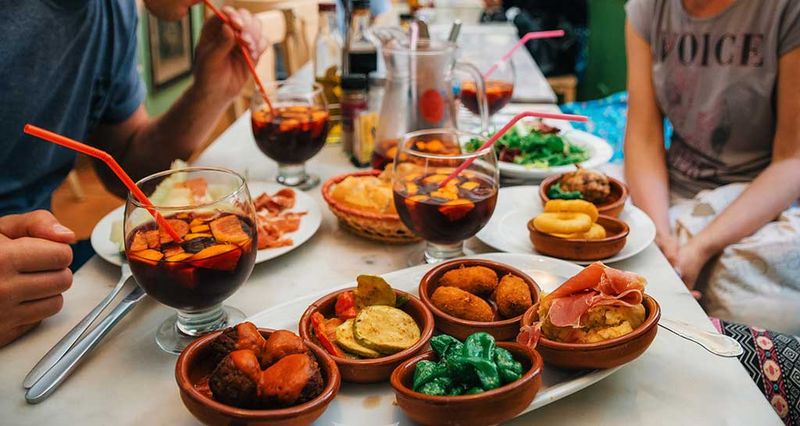
In Spain, tapas are all about sharing small plates with friends and family. The more people at the table, the merrier the dining experience becomes. This tradition reflects the Spanish love for socializing and community, where food is a means to connect and enjoy each other’s company. Sharing tapas turns meals into lively gatherings, filled with laughter, conversation, and a shared appreciation for life’s simple pleasures. It’s a tradition that celebrates the joy of togetherness.
25. No Talking With Food in Mouth – Everywhere!

While many dining traditions vary, one rule is universal: no talking with food in your mouth. This common courtesy transcends cultures, reflecting a shared understanding of respect and manners. Though simple, this tradition underscores the importance of consideration and dignity at the dining table. It’s a worldwide practice that unites people in the subtle art of etiquette, turning dining into a universal language of respect and refinement. Every culture values the grace and composure this rule brings to the table.
